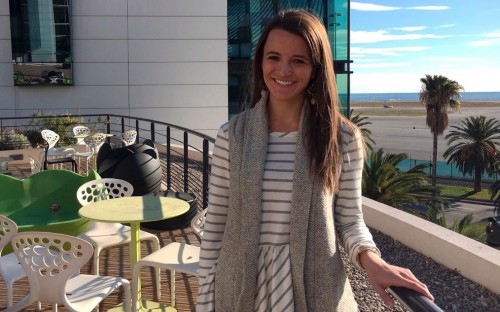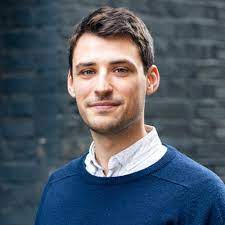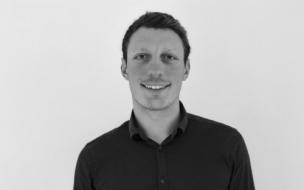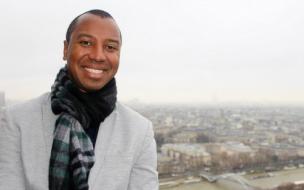At the same time, shorter European MBA programs are on the rise. Last year, 65% of European programs – including one-year, executive and online MBAs - cited an increase in application numbers.
EDHEC Business School’s intensive, 10-month MBA is at the forefront of this trend. At France’s EDHEC, MBA students choose one of four specialization tracks: international finance, global leadership, entrepreneurship, and economic crime management. New cutting-edge courses in big data analytics and artificial intelligence have been introduced this year.
The intimate EDHEC MBA class is over 90% international, composed of 90 students of 39 different nationalities. In 2016, the EDHEC MBA was third in the world for student experience by the Economist, and third in the world for value for money by the Financial Times. While in the US, two-year tuition fees can top $100,000, the EDHEC MBA costs €41,000, around $43,000.
Increasingly, American professionals are relocating thousands of miles in pursuit of a more affordable, international MBA experience abroad. We spoke to four American EDHEC MBAs to find out more.
Lauren Van Horn, MBA ‘17
Lauren worked for JP Morgan and EverBank in the US prior to her MBA. Now, she’s looking to pursue a career in business analytics and data management in Europe.
The intensive ten-month format drew me to the EDHEC MBA. The EDEHC MBA is a fraction of the cost of American programs, yet has the same academic accreditation and standards.
Many programs in the US are marketed as being international programs. However, the majority of students are from the US. At EDHEC, we have 90 students from over 39 countries. This kind of diversity is hard to find elsewhere.
The diversity of the program has helped me learn about doing business with other cultures. My network has grown and I have been put in contact with companies in Europe. There’s no doubt that EDHEC MBA will propel my career to the next level.
I hope that more business schools start to adopt the one-year MBA program model in the future. This model makes it possible to pursue our MBA without acquiring a mountain of debt. I will reap the benefits of an MBA without the burden of paying the program off for decades to come.
Andrew Cusick, MBA ‘16

Andrew worked in consulting at Deloitte before his MBA. After graduation, he returned home to take up the vice presidency at Utah’s Capital Community Bank.
I was looking into some of the top five business schools in North America when I decided on EDHEC. The opportunity cost of the 10-month format was much lower than the traditional 2-year program, and a big selling point.
The EDHEC MBA was a great springboard for my career into the role that I was looking for. I gained a vast wealth of knowledge and experience in a very efficient way.
For most people, taking a full two years away from working is a major hurdle. I think business programs will dramatically change over the coming years into more condensed formats. EDHEC is at the forefront of this movement, and continually rises in the global rankings.
Nathan Neblett, MBA ‘17

A former US Marine officer, Nathan directed operations in Iraq and Japan and worked at the US embassy in Spain before joining EDHEC.
I researched and ranked various MBA programs based on ranking, affordability, and international exposure. The EDHEC MBA is ranked 24th in the world by the Economist, third in the world for ‘Value for Money’ by the Financial Times, and routinely hosts students from over 30 different countries. Once I qualified for one of EDHEC’s scholarships, it was the clear winner.
I hope to benefit from the compressed MBA format offered at EDHEC in order to get established in a new career sooner than if I had pursued a standard full-time MBA.
I believe that MBA applicants looking for ways to change career fields through an MBA will increasingly demand programs with flexible attributes that match their needs. Alternative programs will appeal to people who cannot take an 18-to-24-month interruption from the workforce, but who still want to pursue higher education.
Kerry LaPrees, MBA ‘15

Kerry is a registered architect with over 13 years’ experience. He returned to the US after his MBA and now works as director of design at a top Indiana-based property developer.
I pursued the EDHEC MBA because I wanted the international exposure offered by EDHEC through its student diversity, pool of professors, and location. I wanted a global perspective on business and finance issues, not just a US-centric version.
The intensive 10-month format was certainly appealing, as it meant I did not need to suspend my career for an inordinate amount of time. As a registered architect, only being out of the workforce for a year meant I could still catch up on my licensing requirements, whereas a two-year program would have made that very difficult.
The EDHEC MBA has given me the tools and the confidence to wrestle with executive-level issues around strategy, finance, and managing people, and I have received a boost in my professional responsibilities and compensation. I suspect more full-time MBA programs will trend towards the shorter one-year format to broaden their applicant pools.
RECAPTHA :
4a
29
30
69








